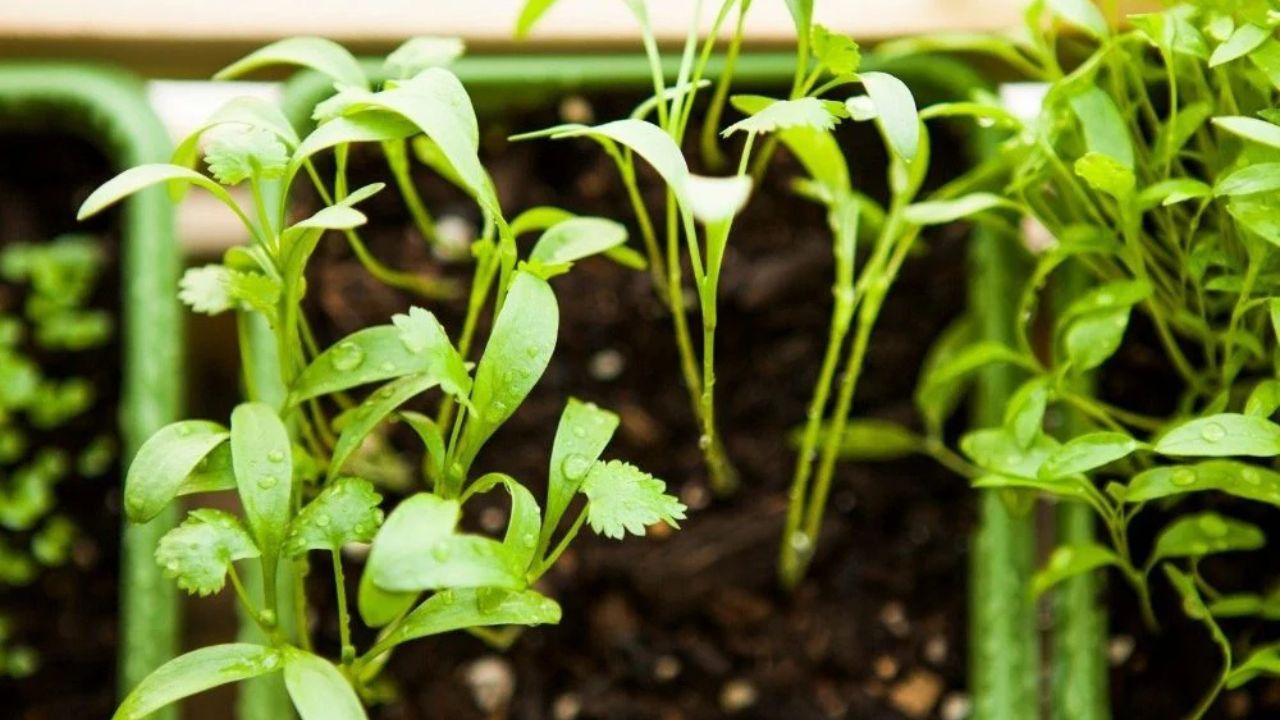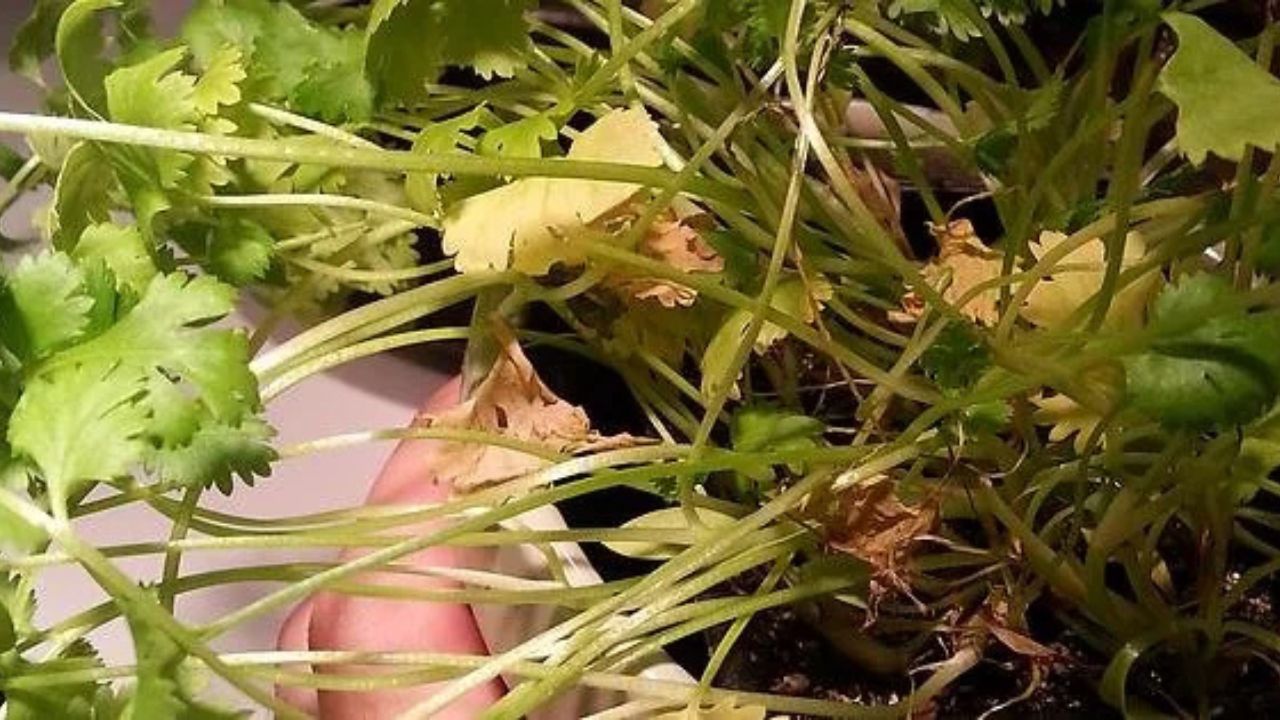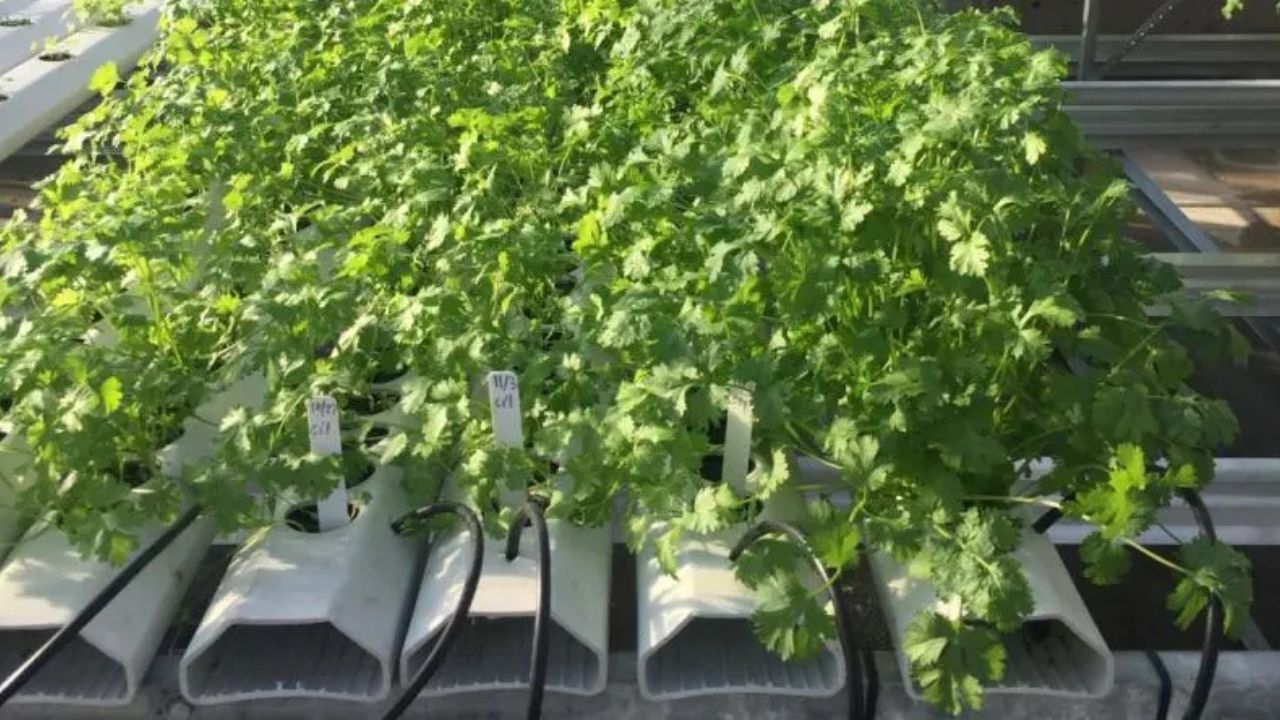Planting cilantro seedlings is a simple and efficient way to grow this versatile herb in your garden. Unlike starting from seeds, using seedlings gives you a head start and ensures faster growth and better yields. With the right soil preparation, proper planting techniques, and attentive care, you can cultivate vibrant cilantro plants that add fresh flavor to your dishes all season long.
Plant Cilantro Seedlings
Planting cilantro seedlings is a straightforward process that sets the foundation for a healthy and flavorful harvest. By carefully preparing the soil, spacing the seedlings properly, and ensuring adequate sunlight and water, you can help your plants thrive.
Starting with seedlings not only speeds up the growth process but also increases the chances of a successful yield. With the right care, cilantro can grow into a lush and productive herb that enhances your kitchen garden.
What Are Cilantro Seedlings?
Cilantro seedlings are small, young plants that have grown from cilantro seeds and are ready to be transplanted into soil. These seedlings are an excellent choice for gardeners who want to save time and get a quicker harvest.
Compared to planting seeds directly, seedlings grow faster and give you a more reliable start. They also make it easier to space plants correctly, helping them grow better without competing for nutrients. By starting with seedlings, you can avoid the challenges of uneven germination and enjoy healthier, more productive cilantro plants.
How to Plant Cilantro Seedlings
Planting cilantro seedlings is a simple process that requires proper preparation and care to ensure healthy growth. Here’s a step-by-step guide:
Preparing the Soil and Selecting the Right Location
Start by choosing a spot that receives partial to full sunlight. Cilantro grows best in well-draining soil rich in organic matter.
Before planting, loosen the soil and mix in compost or organic fertilizer to boost nutrients. Ensure the soil has a pH level between 6.2 and 6.8 for optimal growth.
Spacing and Planting the Seedlings
Space the cilantro seedlings about 6–8 inches apart to give them room to spread. Dig small holes that are deep enough to accommodate the roots without bending them.
Gently place each seedling into the hole, ensuring the roots are covered with soil, and press the soil lightly around the base to secure the plant.
Watering and Sunlight Requirements
Water the seedlings immediately after planting to help them settle into the soil. Cilantro prefers consistently moist soil, so water regularly, but avoid overwatering as it can lead to root rot.
Ensure the plants get at least 4–6 hours of sunlight daily, though partial shade can help in hotter climates.
Tips for Maintaining Healthy Growth
- Mulch: Add a layer of mulch around the plants to retain soil moisture and keep weeds at bay.
- Pruning: Trim the top leaves regularly to encourage bushier growth and prevent the plant from bolting (going to seed too early).
- Fertilizer: Use a balanced, water-soluble fertilizer once a month to provide additional nutrients.
- Pest Management: Watch for pests like aphids and use natural remedies like neem oil to keep them away.
Caring for Your Cilantro Plants
Taking proper care of your cilantro plants is essential to ensure a healthy and abundant harvest. By focusing on fertilization, pest control, and regular pruning, you can keep your plants thriving.
Fertilization Tips
Cilantro grows well in nutrient-rich soil, but additional feeding can boost its growth. Use a balanced, water-soluble fertilizer every 3–4 weeks to provide essential nutrients.
Avoid over-fertilizing, as too much nitrogen can lead to excessive leaf growth and reduced flavor. Compost or organic fertilizers are also excellent options for enriching the soil naturally.
Common Pests and Diseases to Watch Out For
Cilantro is generally low-maintenance, but it can still be affected by pests like aphids, whiteflies, and spider mites. To protect your plants, inspect them regularly and remove pests by hand or use organic insecticides like neem oil.
Diseases such as powdery mildew or fungal infections can occur in overly damp conditions. Ensure proper spacing and avoid overwatering to improve air circulation and prevent these issues.
Pruning for Continuous Harvest
Regular pruning is key to keeping your cilantro plants productive. Start harvesting leaves once the plants are about 6 inches tall. Trim the outer leaves first, leaving the inner ones to continue growing.
Remove any yellowing or damaged leaves promptly to encourage fresh growth. Additionally, pinch off flower buds as soon as they appear to delay bolting and extend the plant’s life cycle.
When to Harvest Cilantro
Knowing the right time to harvest cilantro ensures the best flavor and continuous growth. Proper harvesting techniques also help keep the plant healthy and productive.
Signs of Readiness
Cilantro is ready for harvest when the plants reach about 6–8 inches in height. The leaves should be green, tender, and have a strong aroma. Avoid waiting too long, as older leaves can become bitter, and the plant may start flowering (bolting).
If you see flower buds forming, it’s a sign to harvest immediately, as bolting reduces the plant’s flavor and leaf production.
Tips for Harvesting Without Damaging the Plant
Harvest Outer Leaves First: Use scissors or your fingers to cut the outermost leaves, leaving the inner leaves to continue growing. This allows the plant to regenerate for future harvests.
Cut Close to the Base: When harvesting, cut the stems close to the base, but avoid pulling the entire plant out of the soil unless it’s nearing the end of its life cycle.
Harvest Gradually: Instead of cutting all the leaves at once, harvest in small amounts as needed. This prolongs the plant’s productivity and ensures a steady supply of fresh cilantro.
Avoid Damaging the Roots: Be gentle while harvesting to avoid disturbing the plant’s roots, which can stress the plant and slow its growth.
Related Questions People Often Ask:
Can Cilantro Seedlings Be Transplanted?
Yes, cilantro seedlings can be transplanted, but they should be handled carefully to avoid damaging their delicate roots. Transplant them when they are about 2–3 inches tall for the best results.
What is The Best Time To Plant Cilantro Seedlings?
The best time to plant cilantro seedlings is in spring or fall when the weather is cool, as cilantro thrives in temperatures between 50–85°F (10–29°C).
How Deep Should Cilantro Seedlings Be Planted?
Plant cilantro seedlings at the same depth as they were in their original container, ensuring the roots are covered with soil but the stem remains above the surface.
How Long Does it Take Cilantro Seedlings To Grow Into Mature Plants?
Cilantro seedlings typically take 3–4 weeks to grow into mature plants, ready for harvesting when they reach 6–8 inches in height.
Overall Reflection
Planting cilantro seedlings is an efficient and rewarding way to grow this herb in your garden. With proper soil preparation, spacing, and care, cilantro can flourish into a healthy plant that provides fresh leaves for your kitchen. By following the right techniques for planting, watering, and harvesting, you can enjoy a bountiful cilantro harvest throughout the growing season.




